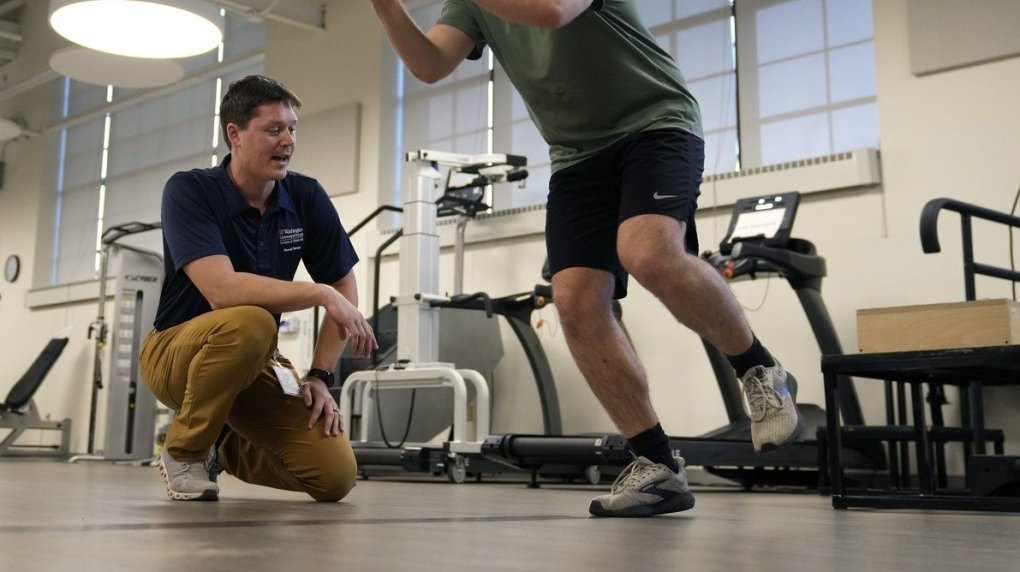If you think physical therapy is just about rehabilitation after surgery or an accident, think again. For the vast majority, seeing a physical therapist should be aimed at prevention, routine evaluation, and maintaining well-being.
“We are the best-kept secret in health care,” Sharon Dunn, former president of the American Physical Therapy Association, told The Associated Press.
Roger Herr, current president of the APTA, and Gammon Earhart, associate dean of physical therapy at Washington University School of Medicine in St. Louis, echoed Dunn’s prevention message in separate interviews with the AP.
“We need to change our image by getting out of our silos, out of our physical clinics,” said Dunn, who teaches at LSU.
The image of the profession tends to be one-dimensional. You’ve had knee surgery, your back is still working poorly or you’re injured, and a doctor refers you to a physical therapist.
You go several times, they do an evaluation and you are discharged with exercises to do and advice on how to move more efficiently.
“That’s a big part of what physical therapists do,” Earhart said. “But I think a lot of people don’t understand it. They think that when they have a major medical problem a physical therapist is going to give them massages until they feel better. “That’s not what it is.”
Follow the dental model
Many in the profession prefer to think of physical therapists in the same way we think of dentists; Patients make appointments for regular exams.
“Even if you don’t have any problems, you go in and check everything,” Earhart said. “If it looks like trouble is brewing, you avoid it at the pass.”
An exam might include your medical history and current health status: physical activity, sleep, nutrition, etc. This would be followed by a look at how it is moving. It could include things like postural alignment and movement patterns when walking, running, reaching, sitting, and standing. In terms of strength and flexibility, think about muscle imbalances.
Herr is a big proponent of annual wellness visits. For all ages.
“Physiotherapists can fit into all parts of the spectrum,” Herr said. “It can be for young, emerging or high-level athletes, or someone who wants to age well and be as functional and independent as possible.”
Think about prevention
You can now visit a physical therapist in all 50 states without needing a referral from a doctor or surgeon. That’s the good news.
“I just don’t think the public knows that they can go to a physical therapist without a referral from a doctor,” Dunn said.
The bad news for an annual exam could be the price. These preventive visits are usually not covered by insurance. Earhart estimated that such a visit to the Midwest could cost $150 out of pocket. But an intervention like this could save costs (and add years of health) in the long run.
Herr, who lives in New York, suggested a cost of between $200 and $300 in a more expensive part of the country.
“Surgeries and accidents can still happen, but you’re usually on top of things with these visits,” Earhart said. “I think if people had a better understanding that the way they move could be setting them up for a problem in the future, they would be much more inclined to see a physical therapist.”
Hips for ballet… or not
We are all built differently with variations in modern architecture etc. It may be helpful to screen children early to decide which sports or activities are best for them. Performing tests beforehand to avoid a problem later is the perfect job for a physical therapist.
“If we looked at kids as they were choosing sports and said this sport is probably not the right kind of stress for the way they’re built, it could save them a lot of pain and trouble down the road,” Earhart said. “Maybe they don’t have hips for ballet.”
Distance runners should think this way. Some are built more efficiently to avoid injuries despite traveling miles or kilometers. Others are not and it would be good to know beforehand.
fear of falling
Falls (and the fear of falling) are debilitating for the aging population. Herr said physical therapists can help with relatively simple interventions.
“You want to show people that they can get back up if they fall,” Herr said. “And once they know they can do it, it gives them confidence and can help reduce the fear of falling. One of the risks of falling is “People don’t do anything, then you don’t move and therefore you become more out of it.” form and less functional”.
Herr noted that “floor-to-foot” movements involve flexibility, strength, balance and coordination. And planning.
“It seems easy to get up from a lying position on the floor to a standing position,” Herr said. “But it’s great exercise for all age groups.”
Weight problems
Earhart estimated that perhaps 50 percent of physical therapy patients are there because of problems related to being overweight.
“Someone doesn’t have to be morbidly obese for their weight to affect their movement,” he said. “The more weight someone carries, the greater the loads on their joints.”
Earhart said she sees patients for “prehabilitation” for weight loss surgery known as bariatric surgery, also known as gastric bypass. This involves the digestive system limiting the amount patients can eat or the ability to take in calories.
Surgery may also involve rehabilitation visits.
Herr said he has watched obese patients lose weight. It can be a question of motivation, although it is not always that simple.
“I’ve seen people change based on a milestone, like having a child, and they really want to be a good parent,” Herr said. “They want to be capable parents, and the same goes for grandparents. “That motivates people to participate thanks to a change in lifestyle.”








